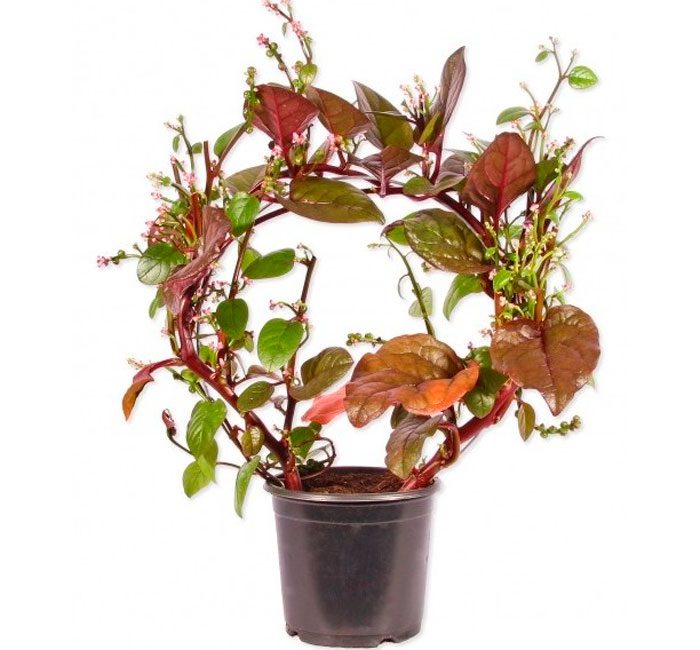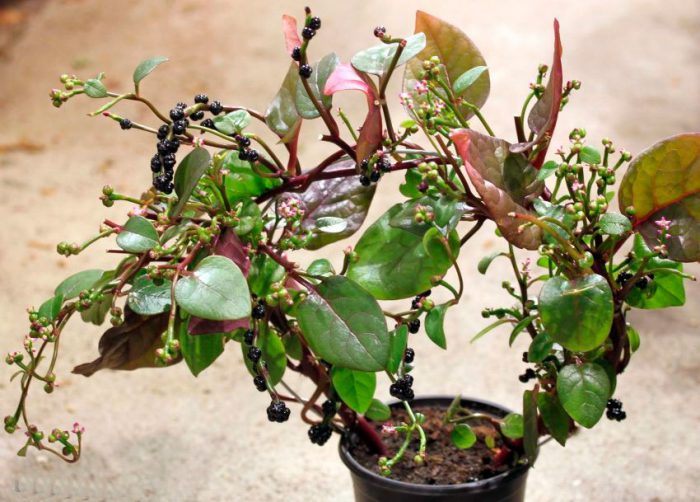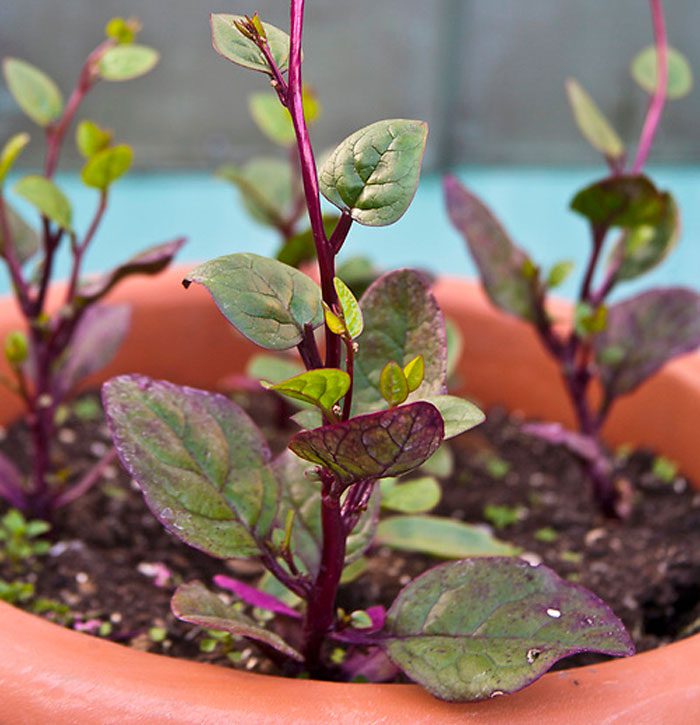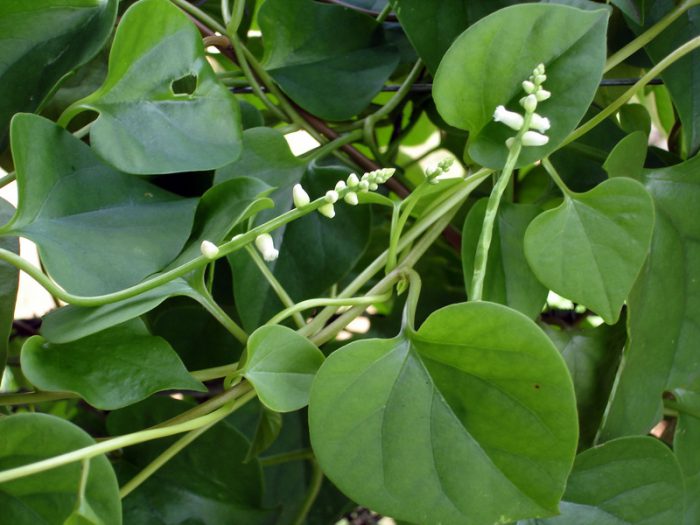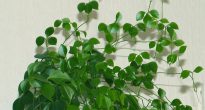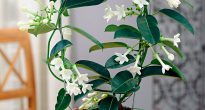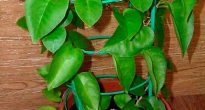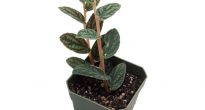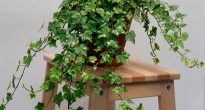An ornamental plant like basella (Basella) is a member of the Basellaceae family. In nature, it can be found in the subtropical and tropical regions of Africa, India, America, Madagascar, New Guinea and the Pacific Islands. This plant is also called "Malabar spinach". This is because basell is most common on the Malabar coast of the Indian subcontinent.
This plant is a vine that loves warmth very much. Its heart-shaped or ovoid, alternately located leaves are pointed at the end, and their length varies from 5 to 12 centimeters. The foliage has a delicate aroma. The highest decorativeness is in varieties with a variegated color of shoots and foliage, while the main color is represented by various shades of red. So, such varieties as "Rosebud", "Rubra", "Select Red" and others are popular.
Content
Caring for basella at home
Illumination
Such a plant needs good illumination, while the direct rays of the sun are not afraid of it. In winter, it is necessary to provide additional lighting for such a flower, otherwise its foliage will become less spectacular.
Temperature regime
In the summertime, the plant thrives best at temperatures between 22 and 25 degrees. In winter, it is recommended to move it to a cooler place with a temperature of no higher than 15-17 degrees.
Humidity
It grows and develops normally at high humidity. To do this, it is recommended to moisten the foliage of the basella as often as possible from a sprayer with lukewarm water.
How to water
In the spring and summer, watering should be systematic. In this case, the soil should be slightly moistened all the time. However, make sure that there is no stagnant liquid in the substrate.
Top dressing
Top dressing is carried out from March to September 1 time in 2 or 4 weeks. To do this, use a liquid complex fertilizer for indoor plants.
Transplant features
In the event that the flower is constantly in the house, then its transplant should be carried out 1 time in 2 or 3 years in the spring. For planting, use loose soil saturated with nutrients. So, a commercial all-purpose soil for indoor plants is perfect. Do not forget to make a good drainage layer at the bottom of the container. Expanded clay is perfect for this.
Reproduction methods
You can propagate by cuttings, seeds. Tuberous basella is also easily propagated by tubers.
Before sowing, which is recommended in April, the seeds should be placed in lukewarm water for 24 hours. For sowing, use loose soil. The container should be tightly covered with transparent film or glass. For germination, a temperature of 18 to 22 degrees is required. Watering the plants is carried out immediately after the top layer of the substrate dries. After the seedlings grow up, they are transplanted into separate containers or open ground.
A glass of water is used to root the cuttings. Roots appear after 5-7 days. After that, they are planted in a container or open ground.
During transplantation, it can be propagated by dividing the tubers.
Pests and diseases
Quite resistant to diseases and pests. If the rules of care are violated, then the plant can settle spider mite, aphid or whitefly.
Main types
Basella white (Basella alba)
This type is the most popular. This climbing liana is a perennial. Its fleshy stem is 9 to 10 meters long. The alternate juicy leaves have a mucous structure. They are dark green in color, heart-shaped, and have a pointed tip. The leaves are 5–12 centimeters long and have a mild aroma. Unisexual white flowers are found in the leaf axils of branched inflorescences. The tips of their fused petals are crimson in color. The fruit is a round, fleshy, juicy berry of black-purple color, the diameter of which is 5 millimeters.
Basella red (Basella rubra)
Very similar to white basella. The difference is in the reddish shoots and leaf plates with red veins. The color of the flowers is white.
Basella tuberous
This vine is herbaceous. The formation of tubers occurs on underground stems (stolons), which are outwardly similar to potato tubers, but sometimes they are more elongated and have a yellowish color. They contain a large amount of starch, but mucus is also present. Compared to potato tubers, basella tubers have a lower taste. Curly shoots. Succulent leaves are heart-shaped.

